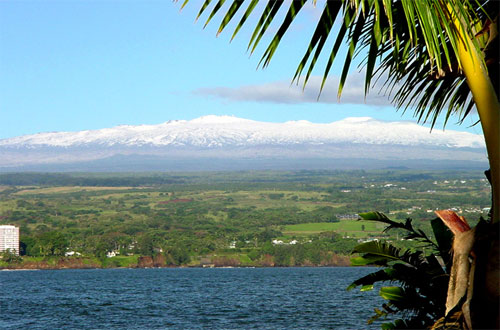Mauna Kea is a dormant volcano, and one of five volcanic peaks, that together, form the island of Hawaii. It is the tallest mountain in the world when measured from base to peak, its base being some 19,678 feet under the surface of the Pacific Ocean, which would bring its total height to 33,474 feet. In Hawaiian, Mauna Kea means “white mountain” – it is regularly snow- or frost-capped during the northern hemisphere winter.
However, the significance behind Mauna Kea, according to Hawaiian legend, is that of two goddesses, Pele the Fire Goddess and Poli’ahu the Goddess of Ice and Snow, and their fight over a man, Aiwohikupua.
According to Danny “Kaniela” Akaka, because of the oppositeness of their particular loves, (Pele’s being volcanoes and eruptions and Poli’ahu’s being cold and snow), they could never reconcile.
“They represent an ever-shifting balance of nature,†he tells us, “and we need both opposites. Pele’s volcanic activity creates land, and Poli‘ahu’s snow tempers it.†Poli‘ahu breaks down what Pele creates — the snow melts into water and cuts the lava;†what Pele creates, Poli‘ahu modifies.
He goes on to say that the Hawaiian way of explaining these two women is as two opposites who never got along. And they personify them in fire and ice, eternal enemies, eternal opposites, in an eternal clash. Pele would try and start her fires at her fire pit in Mauna Kea; Poli‘ahu at times would cover it up with snow and ice, and often prevail.
He says there’s a constant battle, which explains why Mauna Kea’s been dormant, and that it doesn’t mean it’s dead. It’s inactive and could still go off. Maybe Pele’s waiting for the perfect opportunity to erupt again but it seems for now Poli‘ahu prevails.

No responses yet